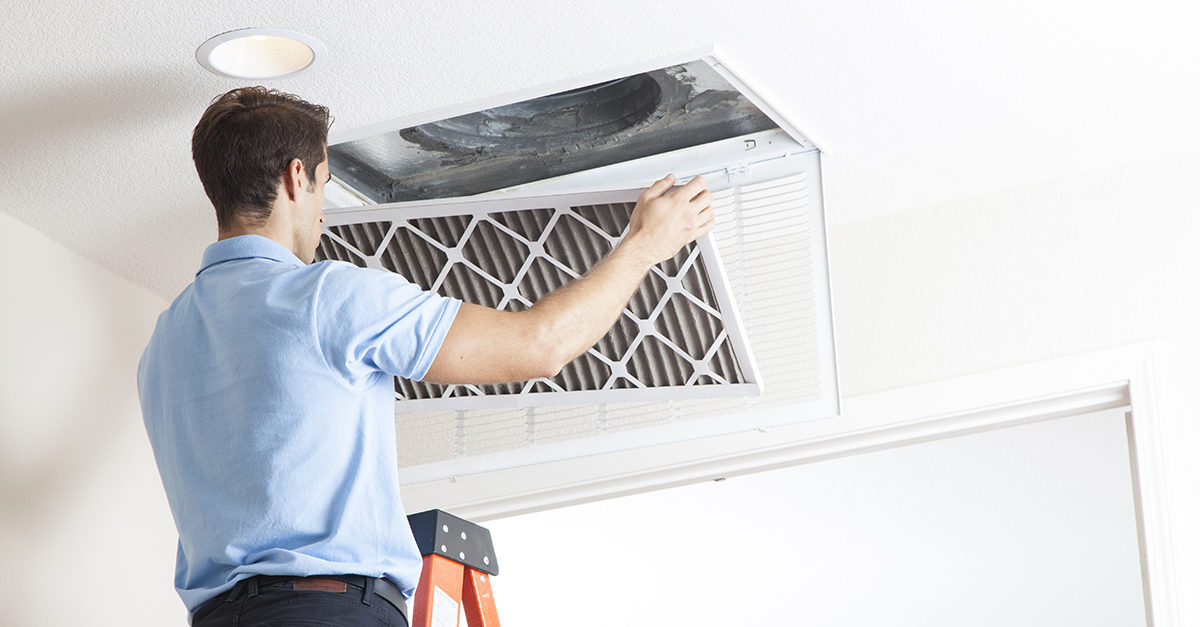This is a great question, which raises many more, especially for facility service providers who might not be familiar with treating mold. There are some processes in the marketplace that claim killing mold “in place” is sufficient and suggest the resulting mold debris does not need to be removed. This is incorrect.
Most often, this position is taken by mold companies that utilize a style of fogging or airless spraying that delivers chemicals to the surface; they claim this system is able to access mold wherever it is and kill it. This process implies once the mold has been killed, it does not need to be removed, providing a cheaper and faster process than traditional mold removal. However, is it effective? No, it is not, unless the process also includes removing the mold debris from the surfaces and air.
This process also brings about many more questions in relation to mold removal. Here are several more questions and answers that can help to provide a quick crash course on the topic of dead mold.
What exactly is dead mold?
Dead mold is defined in two ways: deactivated or dormant. In simple terms, the mold is not actively growing. Mold grows when it has a moisture source, so when the moisture source is removed, it stops growing. It could become active again when moisture is reintroduced.
Sometimes mold is inactivated by a biocide because it prevents it from growing. This disruption may or may not be reversible, depending on the biocide that is used.
What causes mold in the first place?
Moisture-supporting mold comes from two primary sources:
- A water event, like a roof or window leak, broken water heater, leaky P-traps or spills that haven’t been cleaned.
- Relative humidity issues. Elevated moisture in the air can happen as a result of air infiltration issues, condensation around supply registers, or on the windows.
Where should facility managers look for mold and how can they identify it?
Look up at the air supply registers to see if discoloration is appearing on the outer edges of the area. Regularly check moisture-prone areas like toilets, laundry areas, floor drains, slop sinks, and faucets should be checked regularly.
I may have targeted a dead mold spot. What should I do?
Any discoloration identified as mold should be removed whether it is found to be dead or actively growing. Professional assessors want to know its status because the information helps them to determine whether remediation or sanitization techniques are necessary to resolve the issue. For those who are not doing a complete assessment, removing the mold, whether it is dead or alive, will provide a safer and healthier environment indoors.
Is there proof dead mold is still harmful?
For many years, people have been tested by doctors for allergies, and through the testing process, determined to be allergic to mold. The process is called “prick-testing.” During this process, a mold spore is injected just under the skin and if the patient reacts with a raised bump of a certain size or itching, is the doctor may determine that person is sensitive to mold and probably has developed, or will develop, mold allergies. The spore is a dead, not viable, mold spore. What that simply means is that people react to mold whether it is dead or alive. So, why would you want to leave dead mold in place?
The Industrial Hygiene Field Operations Manual produced a mold removal guidelines document for the Navy, which says, “Killing mold is not sufficient. Because residual biomass can still elicit allergenic responses from sensitive individuals, mold must be removed.”
The IICRC emphasizes that even dead mold remains toxigenic and allergic. Mold, when dead, can become a food source for other microbes. And, if it becomes aerosolized, it can become problematic for the person who is sensitive to molds. Further, research has shown that the mycotoxins (mold poisons), produced by some molds, are produced on the surface of the spore and continue to get into the air even if the mold is nonviable (dead). Why would you want to leave the debris?
So what can I take away from all of this?
The evidence is clear that any purported “solution” to kill mold in place is not a solution at all unless it also includes removal of the residual mold debris.



